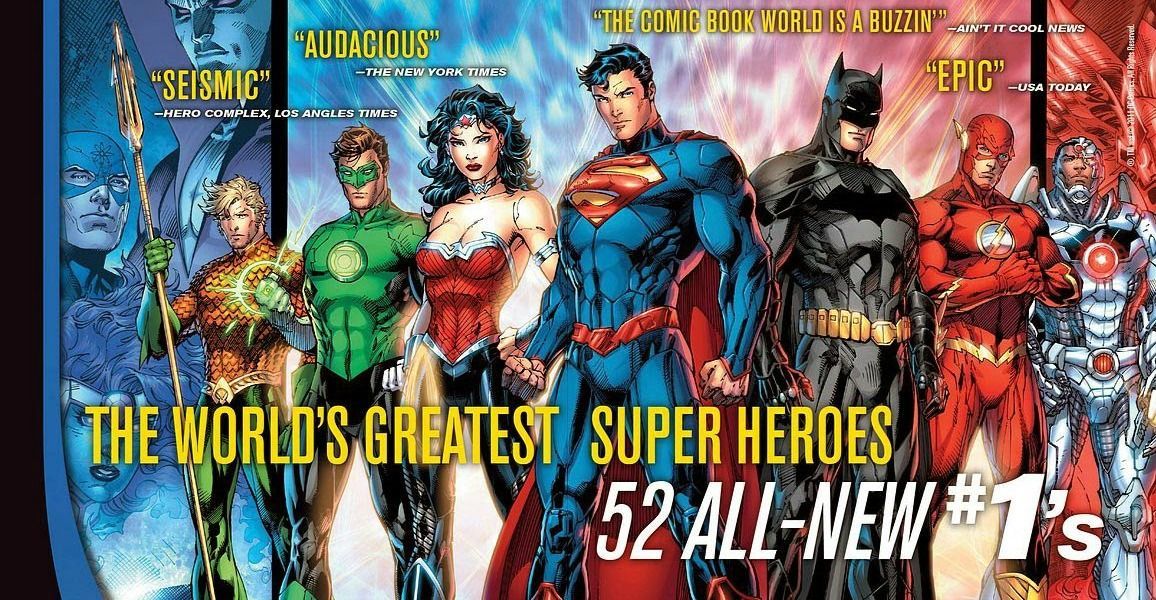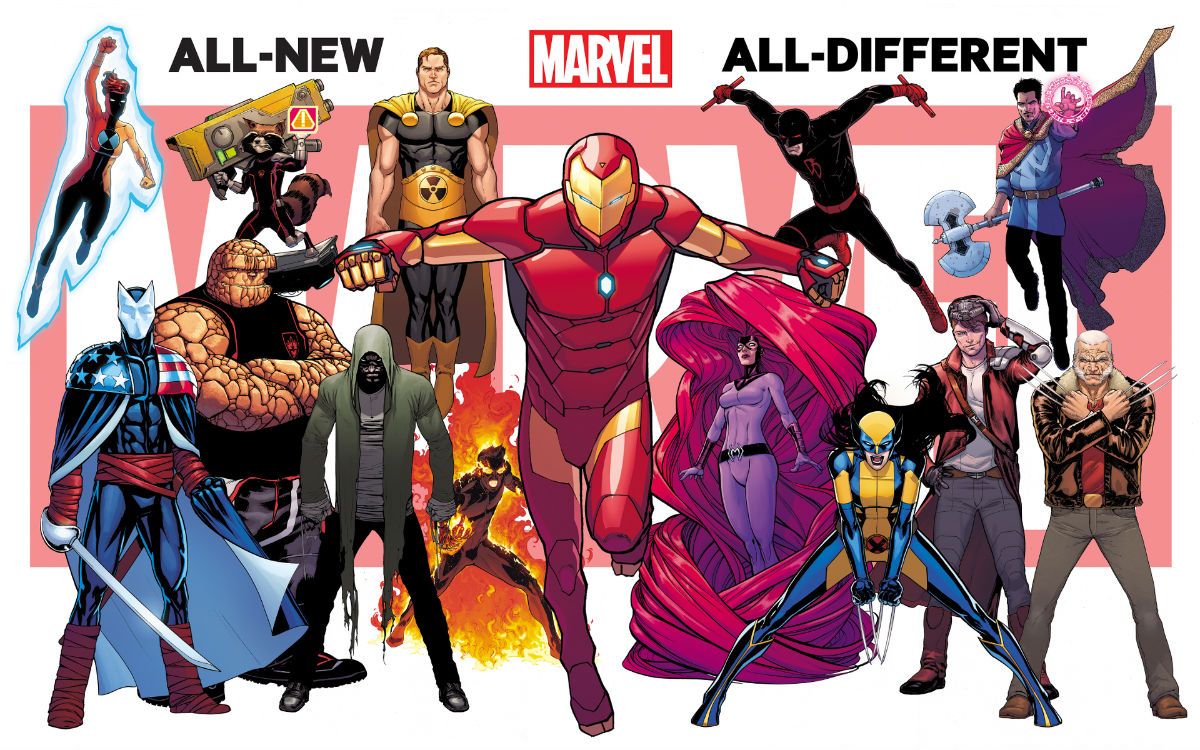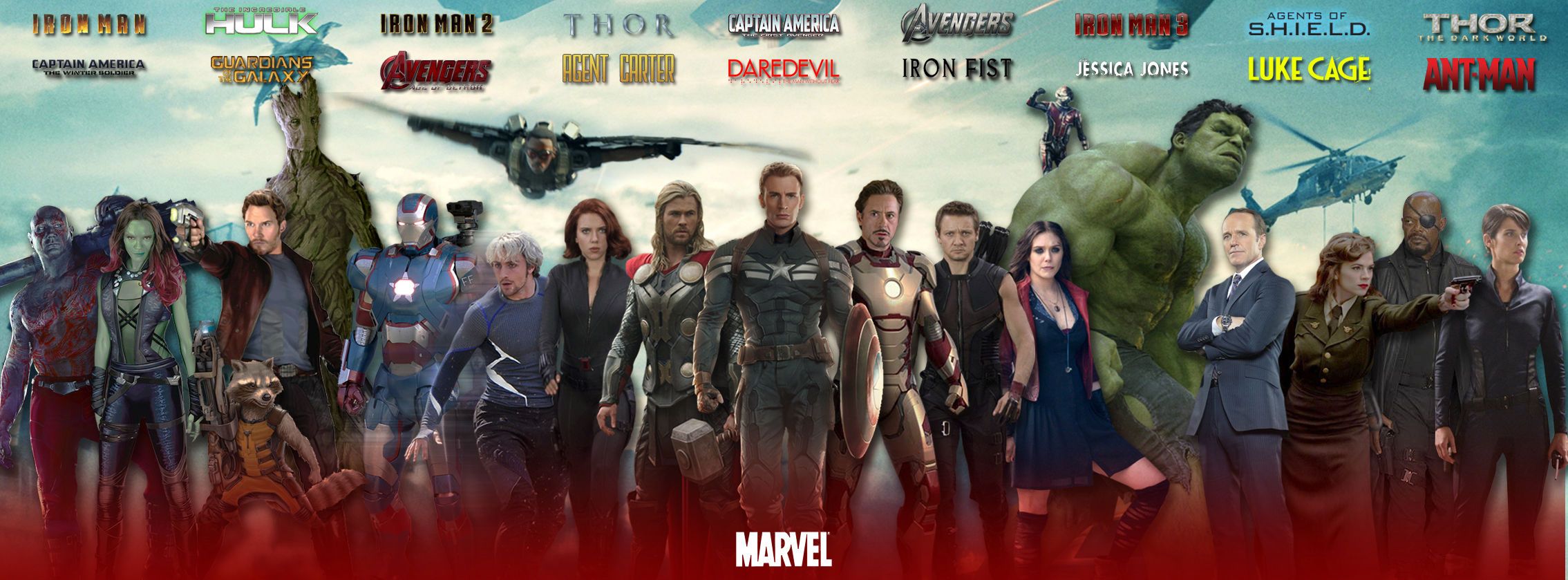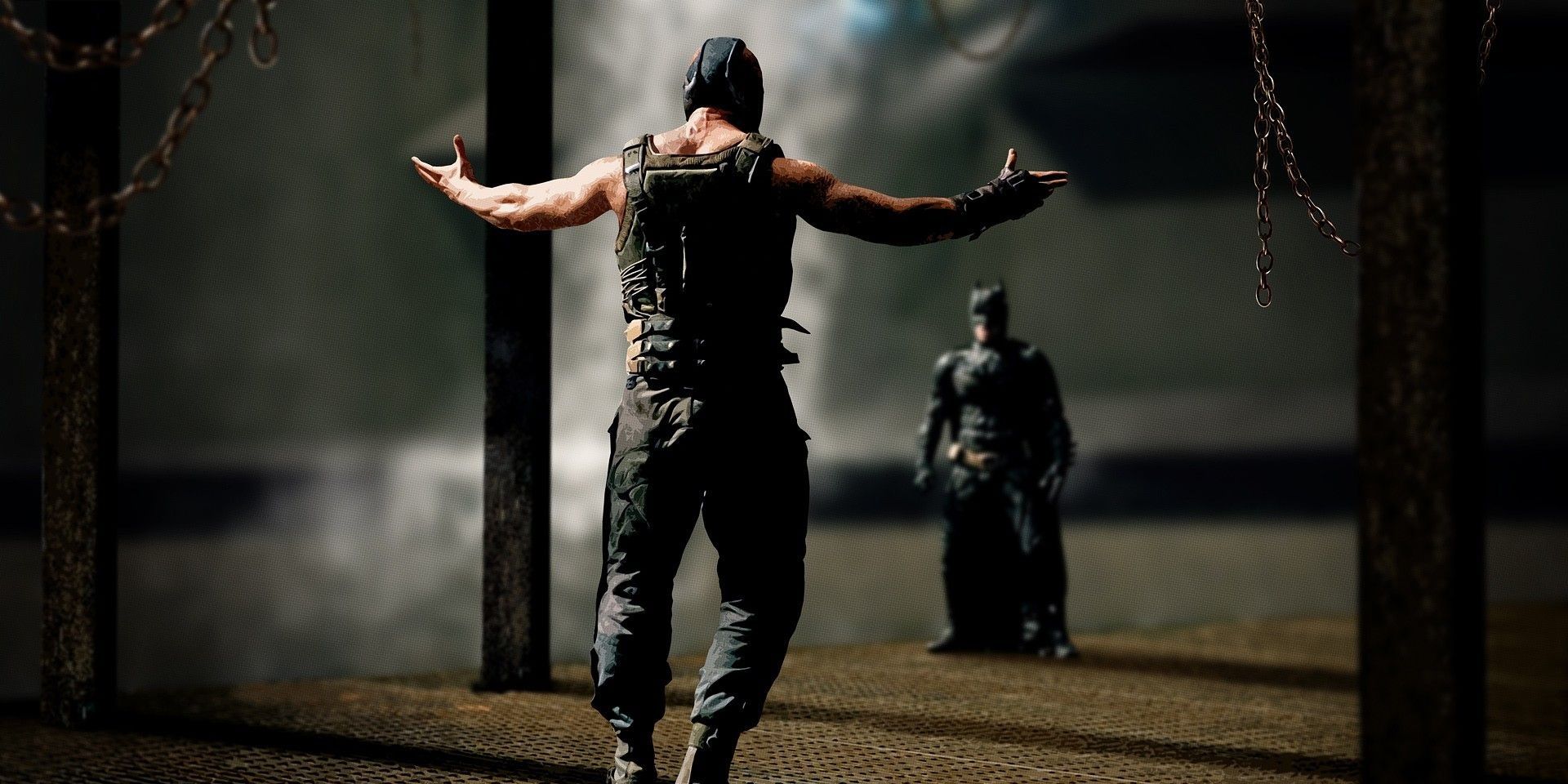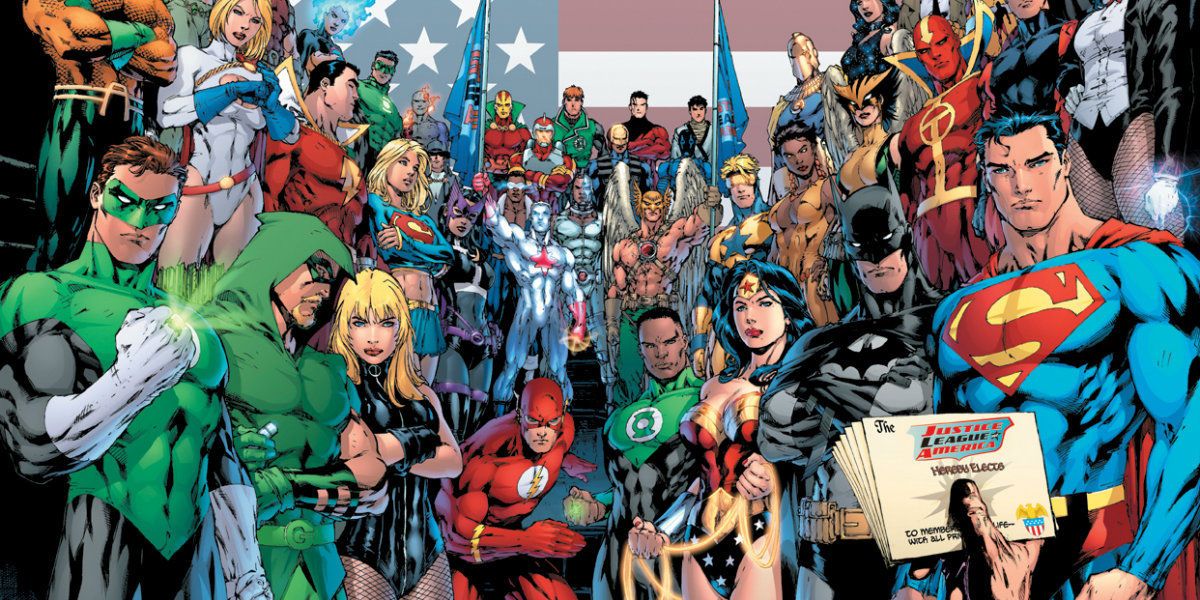In case you haven’t heard, DC Comics is going to relaunch its entire comic book lineup this summer, even though it last did so five years ago. Marvel Comics also unfurled its All-New, All-Different Marvel Universe last year, which restarted all of its various series with brand-new #1s.
Both (further) retoolings are the result of the continued success of the entertainment giants' respective shared cinematic universes – well, in the case of DC, the expected success, as the DC Extended Universe won't be fully established until next month’s Batman v Superman: Dawn of Justice hits theaters. After spending decades trapped in a ghetto of their own making, the comic book publishers are starting to get a taste of that cherished mass market that has long eluded them, and by having their respective comic book lineups more closely reflect the tentpole movies that audiences turn out in droves for, they stand a chance of picking up at least a few of those viewers as new readers – or, at least, that’s the hope.
But it turns out that the films may have much more to teach the comic book industry than just deeper brand-name recognition or superficial resembles. In fact, it may very well be that the Marvel Cinematic Universe is the long-awaited savior of its print counterpart, helping to deliver it to the promised land of cultural ubiquitousness. Here is What Comic Books Can Learn From Comic Book Movies.
General audience accessibility
One of the biggest factors in the MCU’s continued success is its accessibility to audiences of all stripes; the movies take the modern essences of the characters in question, reference important narrative or aesthetic touchstones from their five decades of publication, and then throw out all the rest. It’s the best of both worlds for viewers, as they’re not forced to wade through massive piles of back issues (many of which have since been retconned) but still benefit from their existence.
This is a fact not lost on either Marvel or DC’s publication offices. In fact, attempting to thread the needle of ongoing continuity (which the comic faithful clamor for) and a new starting point (for general audiences) is the very motivation behind their never-ending reboots. The catch here is that these line-wide revamps tend to make things even more convoluted rather than streamlined; in the case of DC’s New 52, which saw its long-running series from the 1930s lose their numberings for brand-new first issues in 2011, all characters were meant to revert to younger, edgier versions of themselves who had only entered their various superhero careers a few years previously – except DC wanted to maintain certain aspects of the characters’ previous continuities. In this way, Batman still has his first and third Robins “graduate” to their own superhero identities, has his second Robin die, and currently has a fourth sidekick all within the space of a single decade.
Then there’s the inconvenient fact that no matter the storyline or the “event” series that kicks it off, these publishing stunts are always short-lived. The New 52’s impending demise later this year may be the most recent example, but any number of character deaths, from Superman to Captain America to that second Robin, are more than ample proof on their own. Knowing that, say, the All-New, All-Different Marvel Universe may have a limited shelf life must take its toll on any possible reader’s willingness to buy in (and that’s certainly a very large “buy,” given all the monthly titles and miniseries that comprise such narrative initiatives).
Solidified storytelling
Despite a few minor instances (The Incredible Hulk, for example, was released second but subsequently reshuffled further down the narrative line), the Marvel Cinematic Universe unfolds in real-time; when viewers walk into The Avengers: Age of Ultron, it really is three years after the superhero team first assembled to do its world-saving thing. And while, yes, Ant-Man may have a flashback to 30 years previously, or Agent Carter may be set 40 years before that, these are contained storylines that serve to reinforce what is happening in the present day. Having only a limited number of films or television series released per year certainly doesn’t hurt, standing in stark contrast to the sheer number of titles one is required to consume in order to follow along with Marvel and DC Comics' line-wide narratives.
It may seem a minor point, but it’s actually a pretty substantial one. Consider that audiences can watch characters age alongside them, or that when a new franchise spins off from the main action – Guardians of the Galaxy, we’re looking at you – it feels organic and relatable, not an obligatory marketing ramp-up to the next big “event.” When coupled with the lack of retconning (well, with the single instance of the Agent Carter short film being replaced by its TV show successor) and with the MCU’s recent debut – we’re now only eight years into the whole storytelling endeavor –it's still surprisingly easy for new fans to pick up on the story and follow along.
Of course, it's a little bit too late for comic books to simplify their own history, but there may be a lesson to be learned going forward.
Next Page: Why the 'comic book death' is a problem
Finality
It’s time to bring in that other comic book adaptation juggernaut: Batman.
One of the biggest selling points of director Christopher Nolan’s Dark Knight trilogy, despite its many flaws, lies in its finality: presenting Bruce Wayne’s (Christian Bale) story – and career as the Caped Crusader – with a definite beginning, middle, and end. When viewers sit down to watch Batman Begins, they now do so knowing that all of their emotional investment in the characters of Bruce, Alfred (Michael Caine), and Gordon (Gary Oldman) will be paid off, that they will be rewarded for following along the narrative’s many twists and turns with a sense of closure.
It turns out that, despite what many entertainment executives spent the vast majority of the 20th century believing, people crave such completion; if death is a natural part – and, arguably, culmination – of life, then the same holds equally true for our narratives. It’s debatable whether such recent cultural heavyweights as The Sopranos and Breaking Bad would have had the same impact without having a denouement, and should the Marvel Cinematic Universe not similarly provide such finality, its lasting legacy may be one of fading away rather than burning out.
Thus, it’s no surprise that comic books have never quite been able to break through in the mainstream. Why devote countless hours and dollars to something that will literally never end? At what point do you give up on a title? When the creative team changes? When the specific storyline is wrapped up? The immortal nature of comic book superheroes and their mantles goes against the storytelling instincts that nearly every other medium has fostered, particularly within the past 20 years.
How to “fix” comics universes
So, how can Marvel and DC learn from their cinematic progeny?
Here’s what it could look like: both comic book universes would start from scratch – and this means using completely blank slates – and would have only a comparative handful of titles, whether they be monthlies or miniseries, to release each and every year, allowing everyone the opportunity to get caught up and be fully on board - much like the Marvel Cinematic Universe currently does. The publishers can state upfront that the current story they’re telling will last for a specific number of issues or years and will, taking a page from the Dark Knight trilogy, have a climax that brings resolution to the various emotional and narrative arcs. (A new storytelling mandate under this new regime: dead characters stay dead.)
Once this has been completed, the whole process can be started over again, with the next batch of creative teams ushering in the next iteration of the company-wide narrative; if Warner Bros. and MGM can endlessly reboot the Batman and James Bond films, then there’s no reason at all that audiences wouldn’t rally behind the comic book companies doing the same, especially if each rendition provides such drastically different results as, say, the Tim Burton, Chris Nolan, and Zack Snyder Bat-movies. The starting-off point for each of these series is also a valid example: under Burton, audiences catch up with Batman just a few months after he first wears the cape and cowl; with Nolan, of course, they see Bruce build everything from the ground up; and, now, Snyder is depicting an older, hardened Batman already some 14 years into his vigilante career.
This new publishing paradigm, in turn, could lead to even more innovations on the big screen, which could then feed directly back into the comics themselves, completing the influential circuit. And who knows? Maybe viewers and readers alike could be completely blown away by seeing a joint enterprise, a film-comic hybrid that would give a whole new meaning to the term “shared universe.”
-
Disagree with our assessment? Think that the comic book publishers need to go even further in reforming their ways? Be sure to share your thoughts in the comments below.

